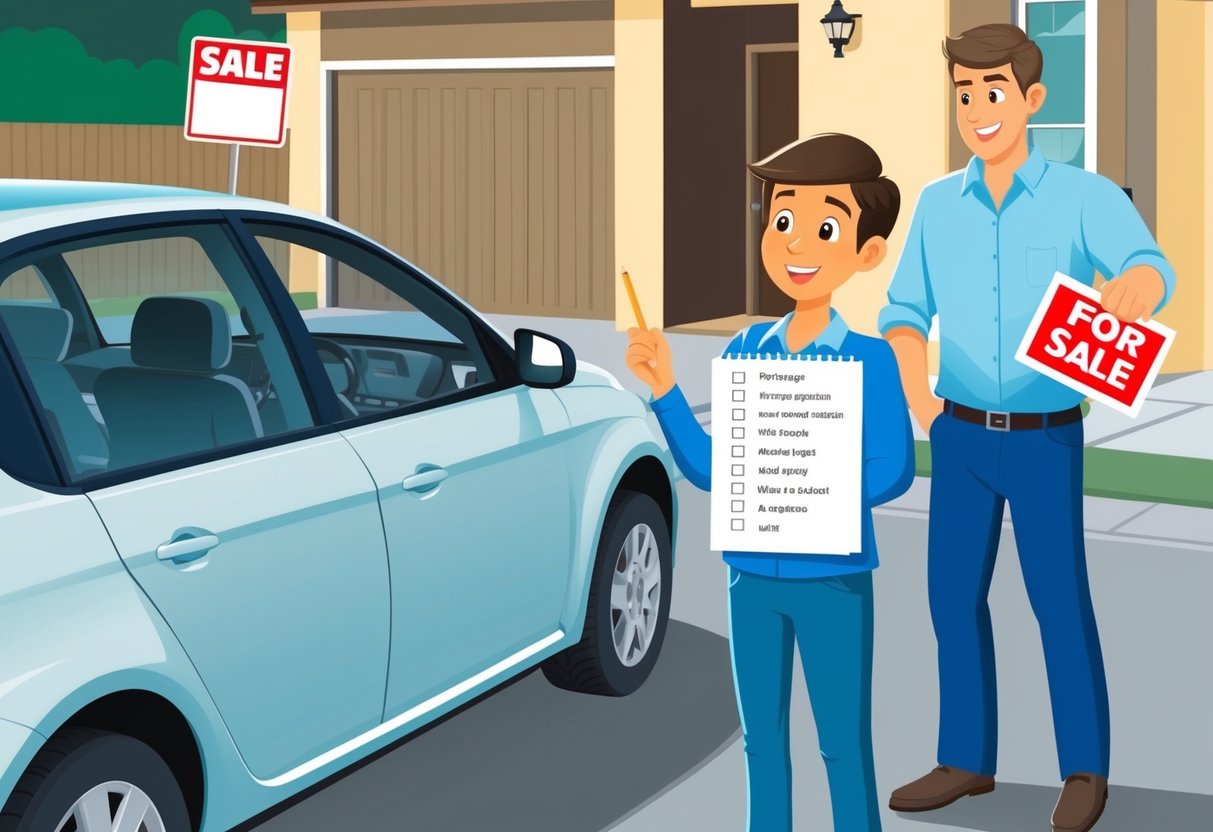
Understanding Ownership and Seller Details
Gathering accurate seller and ownership details can help protect buyers from scams and unexpected problems. Asking the right questions and examining specific documentation ensures a smoother and safer private purchase.
Verifying Private Seller Information
Buyers should always ask for personal identification to confirm the private seller’s identity. Names on a driver’s license, the car title, and bills of sale should all match.
This step helps prevent issues like title jumping or meeting with someone pretending to be the actual owner. It is wise to get a contact number and address.
If possible, view the vehicle at the seller’s residence to confirm authenticity. Using online directories to search for the address can provide added confidence that the seller is legitimate.
If possible, request to see a service history with the seller’s name shown. Autotrader recommends confirming how long they have owned the vehicle and how they acquired it.
Other important questions include how the seller will accept payment and if they have any outstanding loans or liens on the car.
Confirming Title and Ownership Status
A legitimate private sale requires clear title. Always check whether the seller has the physical title in hand and if it’s in their name.
Verify that the Vehicle Identification Number (VIN) on the car matches the one listed on the title and registration documents. Ask if there are any liens on the vehicle.
If so, the lienholder’s information will appear on the title, and the seller must pay off any balance before the sale is complete. Reviewing previous registration records can help confirm whether the car was ever salvaged or rebuilt.
Buyers should also request a bill of sale, which should include both parties’ names, addresses, phone numbers, the final price, mileage, and the VIN. Keeping a copy protects both buyer and seller if disputes arise later.
Exploring Reason for Selling
Understanding why the private seller is getting rid of the car can reveal potential concerns. It’s important to ask directly and observe the seller’s reaction.
Common reasons include upgrading to a new model, moving, or financial needs. If the seller hesitates or gives vague explanations, this could be a red flag.
Directly ask if the car has had any recent major issues, accidents, or mechanical troubles that influenced the decision to sell. Sellers comfortable with their reasons often provide honest and straightforward answers.
Review online forums like Reddit car buying discussions to learn which problematic answers and signs buyers have encountered. This research can help spot when something feels off, safeguarding the buyer from hidden problems.
Test Driving the Used Car

A thorough test drive is a critical step in buying a used car. It is important for buyers to check every aspect of the car’s performance, handling, and comfort before finalizing their decision.
Preparing for the Test Drive
Before the test drive, buyers should examine the car’s exterior and interior for any signs of damage, rust, or uneven wear. Checking tire tread depth, the condition of the brakes, and all lights is essential.
They should verify the seat adjustments, steering wheel, mirrors, and dashboard controls are working properly. Requesting the maintenance records and asking about recent repairs is also recommended.
Buyers should ensure the vehicle has enough fuel, and test features such as the climate control, radio, windows, lock mechanisms, and any included tech packages. It helps to create a checklist with the items to review before and during the drive.
A detailed list is available in many online guides, including Autotrader’s tips for buying a used car.
Evaluating Performance During the Drive
During the test drive, it is best to drive the used car on a range of road types, including city streets and highways. Test the acceleration and braking at various speeds and pay attention to the steering response.
Check how the car handles turns, stops, and rough patches. Note if there is pulling to one side, which could suggest alignment issues.
Monitor the temperature gauge and ensure the car runs smoothly in different driving scenarios. Feedback from the pedals and steering should be steady and predictable.
Potential buyers should also check if the vehicle accelerates evenly and shifts gears without hesitation, whether automatic or manual. Issues with gear shifting or sluggish responses should be investigated before considering purchasing.
Buyers may also want to consult suggested test drive questions from experts.
Observing Sounds and Handling
Listening for unusual noises during the test drive is important. Buyers should lower the windows periodically to detect any knocking, grinding, rattling, or squealing from the engine, brakes, or suspension.
An even idle and absence of excessive vibration are positive indicators. Testing on uneven roads or over speed bumps can reveal suspension or shock absorber issues.
Pay attention to how the steering feels—there should be no excessive looseness or difficulty when turning. Brakes should feel firm and consistent, without pulsation, scraping, or sponginess.
Noting any burning smells or smoke is also critical, as these may point to mechanical problems. Turn off the radio and climate control so outside sounds are easier to notice.